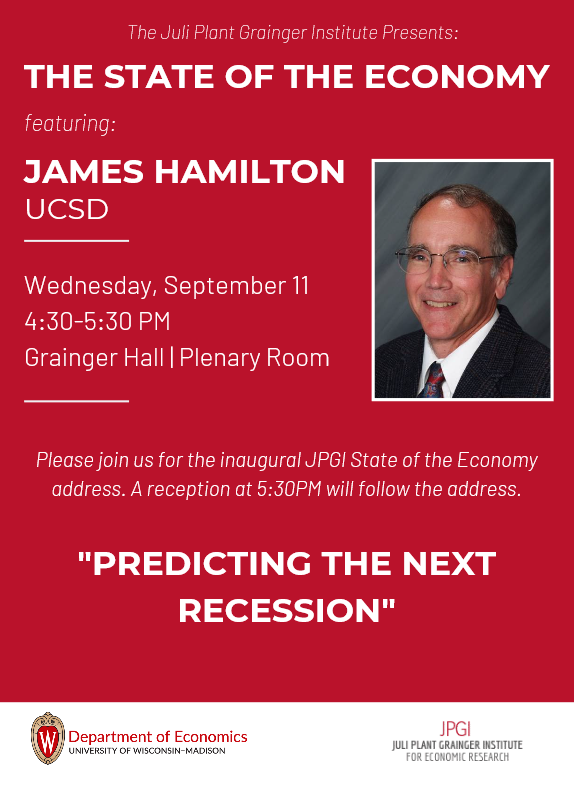A Tenure-track Position at UW Madison
Guest Contribution: “A disaster under-(re)insurance puzzle: Home bias in disaster risk-bearing”
Today, we are pleased to present a guest contribution written Hiro Ito (Portland State University) and Robert N. McCauley (formerly Bank for International Settlements). The views presented represent those of the authors, and not necessarily those of the institutions the authors are affilliated with.
“Predicting the Next Recession” with James Hamilton
I’ll be at this UW Dept of Economics event, in order to learn what awaits us all…
(Actually, it’s required attendance for my Financial System course.)
Registration information here.
Estimated Probability of Recession in August 2020 = 49% 51%
…using plain vanilla 10yr-3mo probit regression, over 1986M01-2019M08 period, using data shown below in Figure 1 [corrections to data, update results 9/5]
Wisconsin Civilian Labor Force Growth during the “Open for Business” Era
Remember February 2011, when Governor Walker declared this?
Guest Contribution: “Oil Prices and the U.S. Economy: Evidence from the Stock Market”
Today, we’re fortunate to have Willem Thorbecke, Senior Fellow at Japan’s Research Institute of Economy, Trade and Industry (RIETI) as a guest contributor. The views expressed represent those of the author himself, and do not necessarily represent those of RIETI, or any other institutions the author is affiliated with.
Prebuttal: Fiscal Policy Can Be Effective
In my mind, absent a shooting war, the economy is headed for a slowdown, if not a recession. I am confident that, should the administration or anybody else propose countercyclical fiscal policy, a set of the usual suspects will deny the efficacy of discretionary policy. Hence, a prebuttal is called for.
Winning! August Soybean Edition
From Bloomberg today:
As confusion about the possibility of a trade deal between Washington and Beijing reigns, Chinese soybean buyers are taking no chances and are turning to U.S. rivals in South America to secure supplies for next year.
Graph of Brazil premium speaks volumes:
So despite Trump’s assertion the Chinese “want deal”, what some people characterize as a price “blip” continues.
RV Sales and Recession in 2020?
In an earlier post from last December, I noted the correlation between growth in RV sales and recession. Extrapolating October YTD data for 2018 as a whole, I obtained 11% probability of recession. Extrapolating June YTD data for 2019 (thanks to reader AS for compiling the time series data), I obtain 70% probability of recession for 2020.
An Ad Hoc Term Premium Adjusted Term Spread Recession Model
One criticism of the use of the term spread model to forecast recession in current times is that this time is different. [1] [2] [3] In particular, due to quantitative easing, the term premium is lower than in past episodes. Hence, in this interpretation, an inverted yield curve no longer signals as much future depressed interest rates as in the past.

